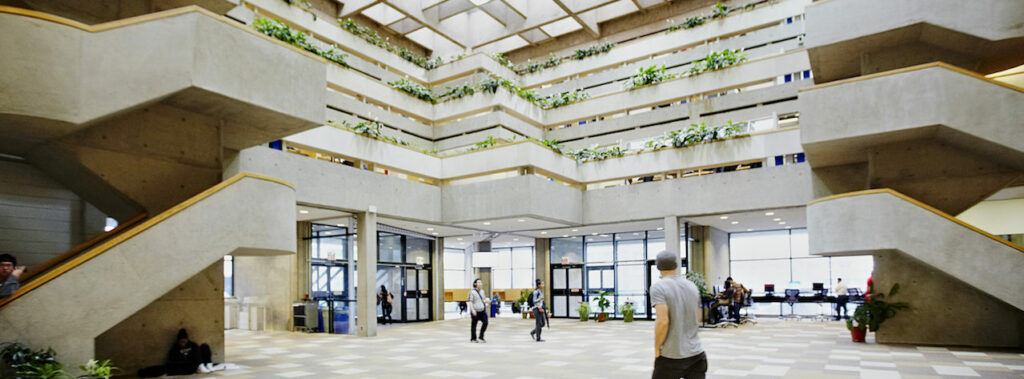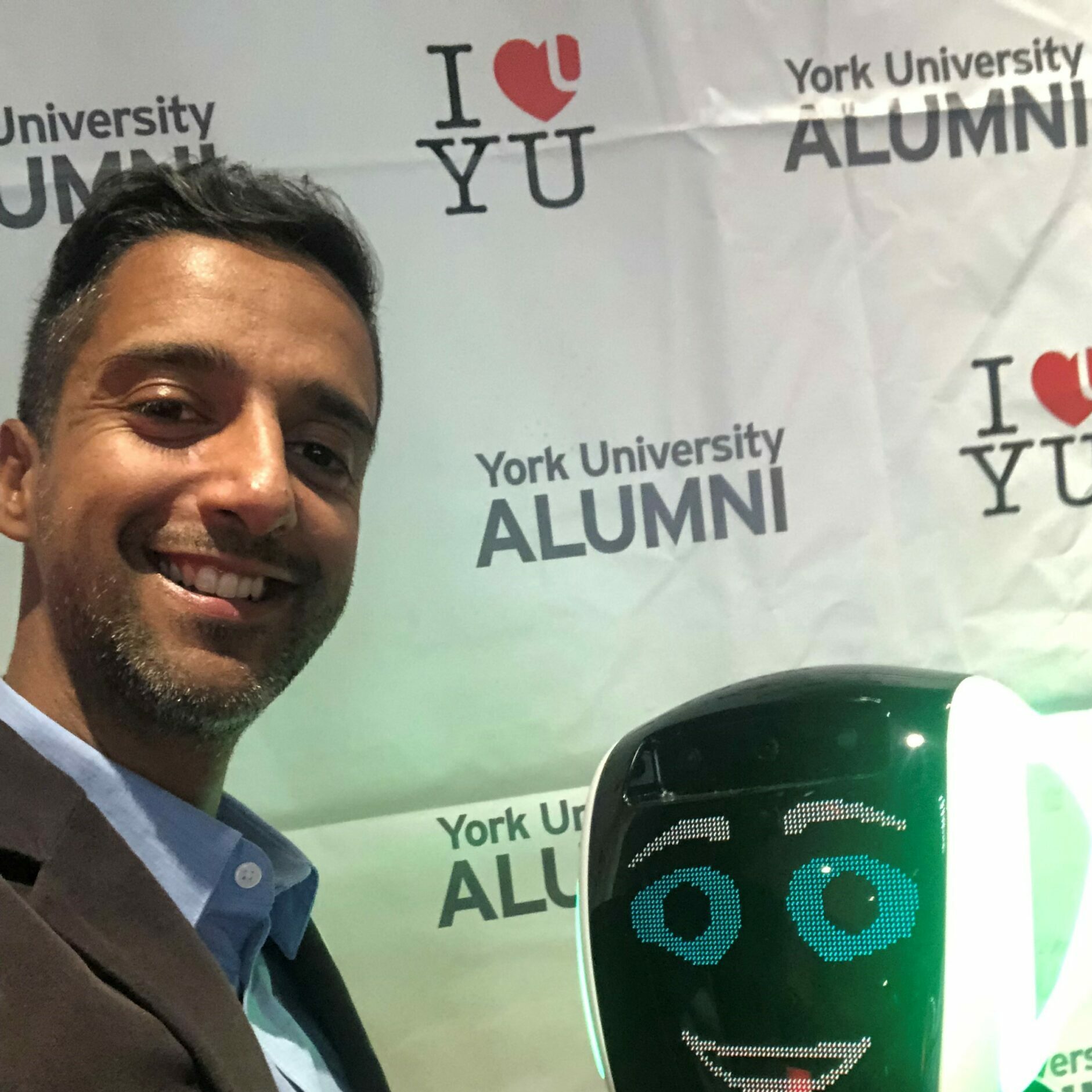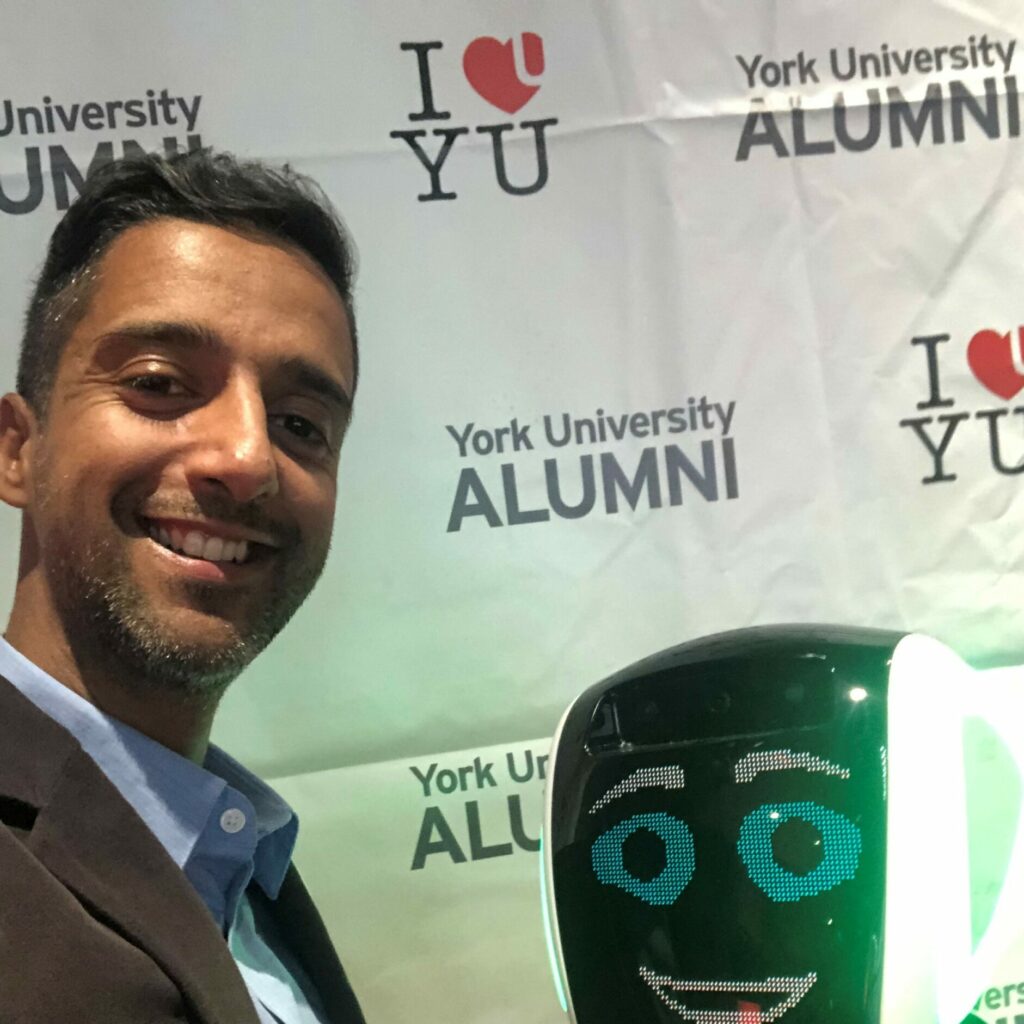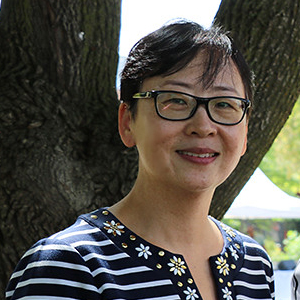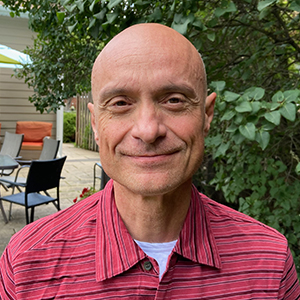York University’s source for faculty and staff news is celebrating its 20-year anniversary on Sept. 9. One of North America’s longest-running university newsletters, YFile is marking the date with this special issue.
In addition to the special issue content, over the course of the upcoming year, YFile will feature a variety of anniversary stories and republish interesting and unique articles from its archive.
Founded in 2002, YFile began with a goal of offering operational announcements, research deadlines and external news about York University to its readers, its first issue featured four short posts, including this first story 3…2…1…Launch!
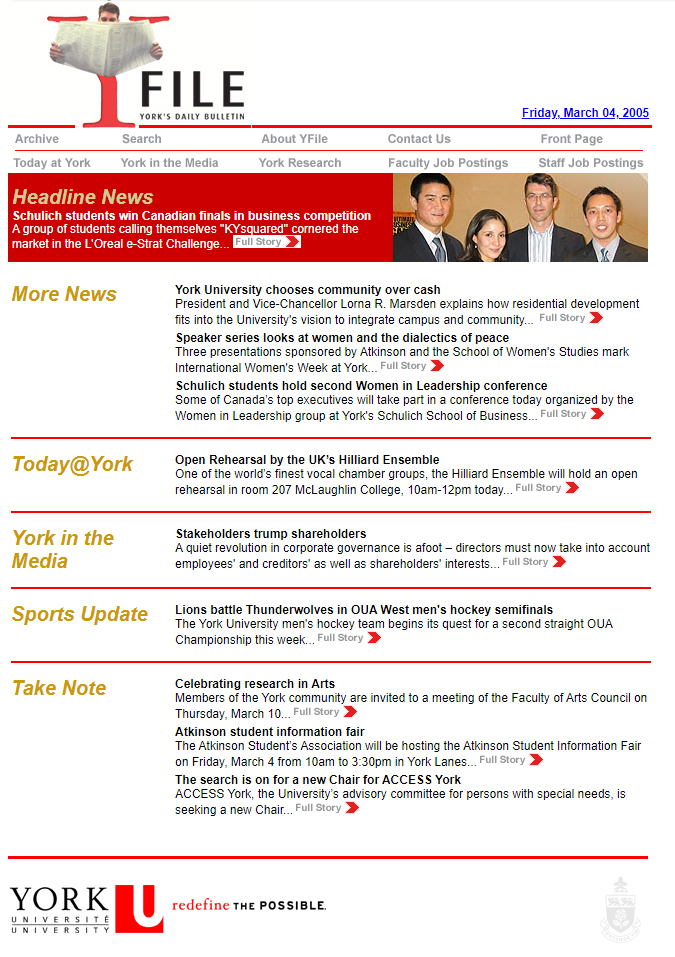
During its 20 years, YFile has undergone three significant evolutions. Each was structured to reflect new trends in digital publishing and to reflect other communication platforms and channels aimed at external audiences. Along the way, the focus of YFile also grew and changed and the publication now provides a wide variety of informative stories. The current version of YFile offers articles about the important discoveries by York researchers, work underway by the University’s talented faculty and staff to innovate how teaching and learning takes place both inside and outside the University, congratulatory stories on awards and recognition garnered by outstanding community members, and the promotion of selected keynote events designed to bring residents of local communities onto campus.
“Over the last two decades YFile has captured York’s important moments and has recorded our shared history as it unfolds,” said Chief Communications and Marketing Officer Susan Webb. “YFile tells the stories of how the University community continues to contribute to positive change. I’m so proud of this publication, and the dedicated team that puts it together.”
Always looking to the future, YFile has continued its quest to incorporate and reinforce the University’s brand personality through interesting content, new and innovative web publishing strategies, and a continued pursuit to provide excellence in service to the University community. In its most recent iteration, which was launched Sept. 15, 2021, the publication merged several decommissioned web archives of its content into a robust archive. YFile staff are now working with experts in the Clara Thomas Archives & Special Collections to match images with text and enhance the archive of its stories. You can read about this work in this special issue.
Combining award-winning writing, design and the skills of two full-time journalists – Editor Jenny Pitt-Clark and Deputy Editor Ashley Goodfellow Craig – YFile continues its focus on connecting faculty and staff with each other through new innovations including special focus publications. Working with content experts in the Office of the Vice-President Research & Innovation and the Office of the Associate Vice-President Teaching & Learning, YFile offers two special focus issues on select Fridays each month during the academic year. The first regular special focus issue, originally known as “Brainstorm,” features interesting articles on the exciting discoveries by York University’s accomplished researchers. In fact, look for “Brainstorm” to be relaunched this year under a new name, “Aspire.” The second regular special focus issue is “Innovatus,” and its content focuses on teaching and learning, the student experience and internationalization. ”Innovatus” will publish its first issue of the 2022-23 academic year later this month.
“There’s barely a day that I don’t read YFile. And with almost every edition I learn something new about York University and what my colleagues have been doing and the successes they’ve experienced. I’m proud to have been able to highlight the work of my graduate students for the York community through YFile,” said Will Gage, associate vice-president teaching & learning. “I’ve also been privileged to work directly with the team who creates YFile from time to time. With Jenny and her colleague, we’ve created ‘Innovatus,’ a monthly special issue of YFile that focuses on innovations in teaching and learning. And while YFile is focused on distributing to our York community, from time to time a YFile story gets picked up by other media and shared more broadly, which is incredibly rewarding.”
Every innovation, including special focus issues, new articles and approach to presenting content, is created with York University community members in mind. “The best moments I’ve had working on YFile over the past 19 years have been when faculty and staff express their delight with our approach to their news and the stories we write,” said Pitt-Clark. “It’s gratifying and exciting to be able to interview them and a privilege for YFile to convey their news.”
YFile also reflects and promotes the key drivers of the University Academic Plan 2020 – 2025, and of particular importance is the publication’s focus on York University’s community of changemakers and their collective effort to create positive change and address the United Nations 17 Sustainable Development Goals.
And finally, one of the biggest triumphs for YFile in its 20-year history has been its role connecting the University community during the COVID-19 pandemic. As people pivoted to distance learning and working, YFile continued to publish with a renewed focus on connecting students, faculty and staff with each other through informative and innovative reporting, and important communications focused on keeping everyone safe and healthy.
To kick off the anniversary year, YFile has launched a special anniversary webpage that will capture the celebratory content available at go.yorku.ca/yfile20.




